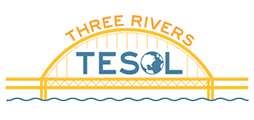Facilitating Student Collaboration and Engagement in Remote Breakout Rooms
By Bill Price
 Collaborative learning and discussion are crucial for language learning. However, remote learning makes it difficult to implement the kinds of pair and group activities that ESL instructors are most familiar with. In my personal experience with remote instruction in 2020, some of the difficulties I have encountered include lower, and more limited, student participation in class activities; lower student comprehension of tasks and directions; limited ability for the teacher to monitor students’ work; and limited ability for students to monitor, assess, and comment on each other’s work in constructive ways. Despite these difficulties, if we as instructors design collaborative activities well and use the technology well, we can enhance the remote learning experience for our students.
Collaborative learning and discussion are crucial for language learning. However, remote learning makes it difficult to implement the kinds of pair and group activities that ESL instructors are most familiar with. In my personal experience with remote instruction in 2020, some of the difficulties I have encountered include lower, and more limited, student participation in class activities; lower student comprehension of tasks and directions; limited ability for the teacher to monitor students’ work; and limited ability for students to monitor, assess, and comment on each other’s work in constructive ways. Despite these difficulties, if we as instructors design collaborative activities well and use the technology well, we can enhance the remote learning experience for our students.
Collaborative learning is a form of learning which involves two or more contributors to a task, and its interactive and constructive nature distinguishes it from mere parallel “co-authoring” (Storch, 2013). Collaborative tasks are typically multimodal, often including spoken negotiation of the task as well as a concrete (often written) final product demonstrating the completion of the task. A good collaborative task promotes the generation of ideas, and allowing space for deliberation and negotiation between students is necessary in the design of such a task. Collaborative learning tasks require the negotiation of meaning between peers, an action and skill which is useful for language learning (Long, 1983, 1996).
Designing a good collaborative task in the physical classroom requires weighing multiple considerations. Instructors should ask themselves: What language skills do students need to employ to complete activity? What is the language goal of the activity (e.g., meaningful communication or accurate language use)? And how can you ensure participants contribute equally? To better facilitate constructive collaboration rather than parallel work, it is often helpful to assign roles to students to make their involvement in the collaborative process clear and provide students with concrete goals for activities and tasks.
Collaborative tasks conducted remotely involve all of the above concerns, but remote collaboration is further complicated by the fact that all interaction is mediated by technology. My institution uses Zoom, a piece of video conferencing software, for remote instruction. One feature of Zoom is the “breakout room.” Breakout rooms are “sessions that are split off from the main Zoom meeting. They allow the participants to meet in smaller groups, and are completely isolated in terms of audio and video from the main session” (Zoom Help Center). As such, breakout rooms have characteristics that help and hinder collaborative learning. Although the isolated nature of breakout rooms promotes focus and reduces distractions for students, it is very difficult for instructors to monitor breakout rooms in effective and equitable ways to answer student questions and ensure students have fully understood the task and are working productively.
As such, in addition to minding the general principles and advice for collaborative tasks presented above, instructors who deploy collaborative tasks in a remote context with breakout rooms should make the task, the collaborative interaction, and the deliverable as clear as possible in their directions in order to reduce confusion. For example: “You will find and correct errors in three sentences. Discuss each sentence with your partners to identify the mistakes and decide how to fix them together. At the end of the activity, your group leader will read your three corrected sentences to the class.”
In addition, if you want students to use a certain software tool, be specific, and be prepared to help them troubleshoot the use of that tool. Some examples: “Use the screen-sharing tool to look at the sentences together.” “Use the whiteboard tool to share your ideas.” “Use the online Word document to write your answers.”
Finally, before sending students to the breakout room, provide them with visual support they can use inside of the breakout room. For example, you can send students a photo or screenshot of an activity that a group leader can then screen-share in the breakout room; you can send a link to an online document that students can view and edit simultaneously; or you can instruct students to use the Zoom “whiteboard” feature if appropriate.
In closing, here is an example activity that participants at the Three Rivers TESOL Fall 2020 conference completed during this workshop: https://tinyurl.com/3rt2020bp
Bill Price is an ESL instructor at the University of Pittsburgh. You can contact him at wcp5@pitt.edu.
References
Long, M. H. (1983). Native speaker/non-native speaker conversation and the negotiation of comprehensible input. Applied linguistics, 4(2), 126-141.
Long, M. (1996). The role of the linguistic environment in second language acquisition. In W. C. Ritchie & T. K. Bhatia (Eds.), Handbook of second language acquisition (pp. 413-468). Academic Press.
Storch, N. (2017). Implementing and assessing collaborative writing activities in EAP classes. In J. Bitchener, N. Storch, & R. Wette (Eds.), Teaching writing for academic purposes to multilingual students: Instructional Approaches (1 ed., Vol. 1, pp. 130-144). Routledge. https://doi.org/10.4324/9781315269665

